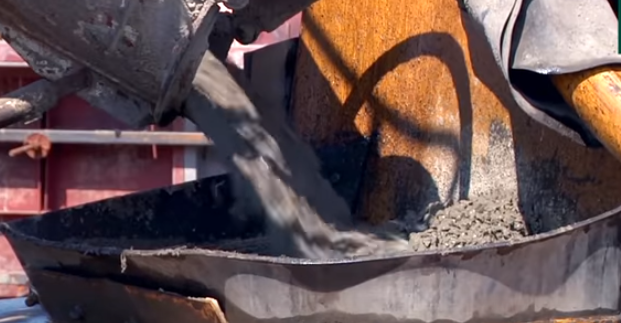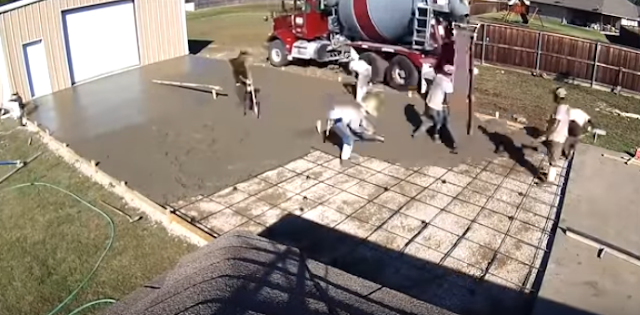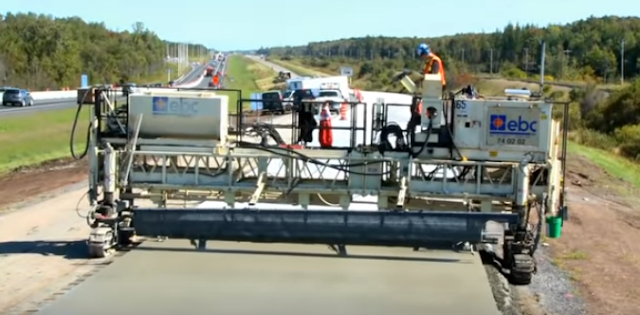Content
1. What is concrete.
2. Concrete spot can create the look you are looking for.
2. Advantages of the always reliable concrete road.
1. What is concrete.
 |
Simple concrete consists of three components: water, aggregates and Portland cement |
Portland cement is a mixture of calcium, silicon, aluminum, iron and minor amounts of other ingredients. It is the basic component of concrete and can be controlled by adjusting the setting time with gypsum. Water and cement form an adhesive-like mixture that covers aggregates and joins rock and sand during drying and curing. One way to optimize your project is to use the right amount of fine to large aggregates while using the largest possible aggregate. Water reacts chemically with the cement during an exothermic reaction. The faster the setting time, the less time you have to work after casting with the concrete mix. The amount of water in the mixture compared to the amount of cement is referred to as the water / cement ratio. The lower the water / cement ratio, the more resistant the concrete and the less permeable.
In the manufacture of prefabricated septic tanks, it is very important to understand the permeability of the final product. In any construction project, it is important to build a road or a house to know the strength and wear resulting from the structure. In the southwest, sun and drought are important factors, while in the northwest the humidity level should be considered. In cold climates, freezing and thawing concrete must be calculated. The expansion of concrete is an aspect to consider. On bridges, you often see small gaps in the road to heat and cool the concrete.
Concrete is the most widely used synthetic material in the world. If you look around, you will see it wherever human beings live on the earth. If you're driving on highways, even if it's not concrete, you'll see concrete barriers used to separate the road or protect workers on the streets. Concrete is used in construction projects, from the largest dams in the world to nest boxes in the backyard. It is an amazing and versatile material, limited only by imagination.
2. Concrete spot can create the look you are looking for.
 |
| Concrete stain: application areas, preparation and application of the stain |
Applications: Acid Stain can be applied to all cement surfaces such as corridors, access roads, lounges, bathrooms, terraces, floors and busy areas. It should be noted, however, that not all types of concrete floors are suitable for dyeing, although maturity is not a problem, but the condition. The softer the surface, the better the result compared to older floors. Older soils, however, contribute to an indispensable character, with errors and imperfections merging with the overall picture. The dye does not react well and gives the desired result when the concrete granules are exposed to acid or pretreated, since the granules do not react to the dyeing process. In terms of structured surface application, such as punched or stamped concrete layers, concrete dye provides a depth of color and a beautiful realistic appearance of the surface.
Preparation: The preparation of the coloring depends exclusively on the condition of the concrete. The new concrete must be cured about three weeks after pouring, rinsing and scrubbing to remove debris and dirt. In the case of old concrete, the preparation involves a thorough cleaning of dirt, grease, paint or putty, which prevents the absorption and reaction of stains. It is recommended to always carry out a preliminary reaction test in a small area. Begin your color project with preparation and planning and then continue with the application.
Application of stains: The application of real stains requires only a few tools. Various sprinklers, brushes and a diamond saw are required to delineate the surface. First, test your hand with a simple design and then move on to more complex and challenging projects. Remember, the more complicated your design is, the harder it gets. It is imperative to seal or polish the tinted floor after the process to protect the stain and add depth and shine.
3. Advantages of the always reliable concrete road.
 |
| Access roads such as concrete |
Functionality: In terms of structural strength and long-term integrity, concrete is high on the list for highly functional materials. A concrete pavement is extremely durable, which means that this option is less likely or damaged. So perfect to accept even the biggest SUV without showing signs of surface deformation, even after a long break, due to the weight of the vehicle. A properly poured concrete road can take more than 30 years. On the other hand, a unit of gravel or asphalt needs to be replaced or replaced frequently.
Improving the Appearance of Properties: A concrete pavement no longer has to consist of a smooth, flat slab of slate gray or similar color. It is now possible to create entries with a wide variety of eye-catching patterns, with multiple options for colors, textures, and patterns. The patterns offer very flexible options with a choice of brick, paver or swirl patterns. Colored, textured or polished concrete can effectively increase the attractiveness of properties.
Low maintenance: A concrete road is very resilient and therefore requires little work to maintain the overall appearance. In most cases, stains and stains can be removed with warm water and soap, while stubborn stains can often be removed with a dry grain cleaner. In addition, a solid surface like concrete is very easy to clean the snow.
Economy: Due to the long service life of the concrete surface, this road material offers a high degree of economy. Although the cost of setting up the interface is not cheap, this initial investment pays off quickly as it can increase the market value, appearance and overall functionality of a property.
Respect for the environment: It is often stated that concrete offers environmental benefits. An entrance area of this type can be made with various recyclable materials. Concrete can also reflect light, which can reduce the number of external night lights. Finally, at the end of their useful life, the driveway can be recycled into concrete aggregates or granular back fills.






No comments:
Post a Comment